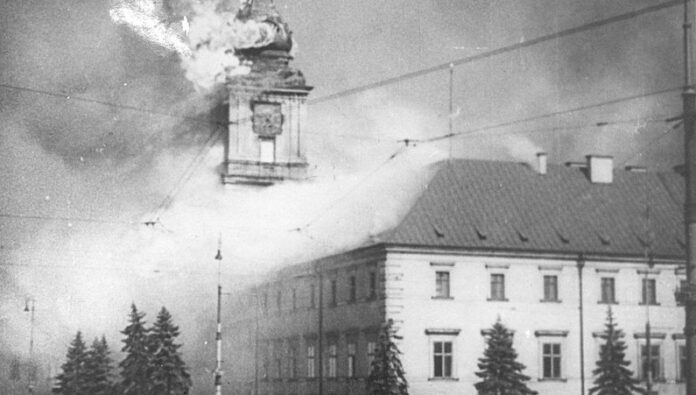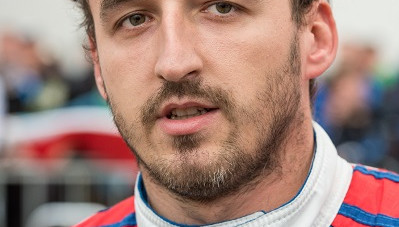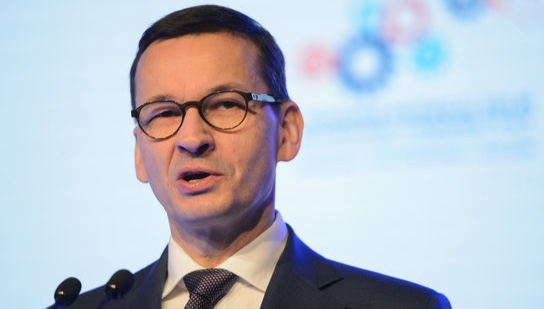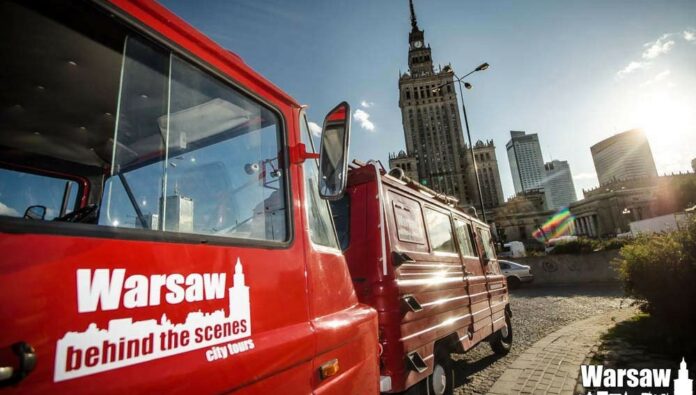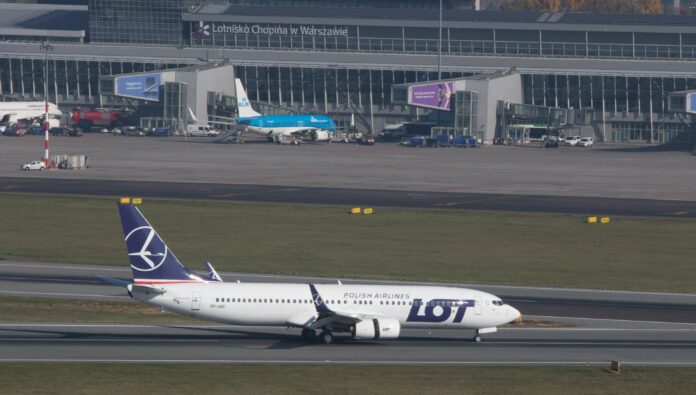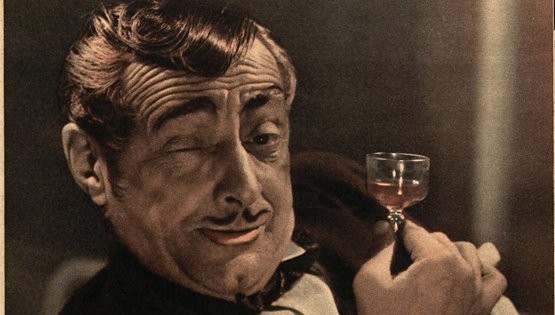The Bombing of Warsaw in World War II refers to the bombing campaign of Warsaw by the German Luftwaffe during the siege of Warsaw in the invasion of Poland in 1939. During the course of the war approximately 84% of the city was destroyed due to German mass bombings, heavy artillery fire and a planned demolition campaign. Learn more with William Richarsson and Wojciech Młotkowski, guide of Warsaw Behind the Scenes tour operator.
Robert Kubica fans rejoice! He is back on track!
The 34-year-old driver is returning to track after more than eight years out of competitive Formula 1 racing, thanks to the PKN ORLEN investment he will race as a member of British team Williams.
This return to competitive racing is an remarkable comeback after 2011 when his rally car crashed into a barrier that almost caused his right arm to be amputated
Orlen CEO Daniel Obaitek said: “It’s a two-year contract, but as the company is now engaged it has higher hopes from Formula 1. “It’s an investment which has to last. For sure this contract makes business sense and will have business effects.”
The PKN boss also stated that the sponsorship deal guaranteed promotion of Orlen products by Williams.
“We have to build or brand recognition, like other companies do. We would generally like to be a better recognised brand beyond the borders of our country. Our research shows that our recognisability is definitely lower than other companies and through this contract we’re building that recognisability.”
Kubica will now go to the UK for three days where engineers will work on the new car.
From there it’s off to Barcelona for pre-season testing day on February 18-21 and February 26-March 1 with his first Formula 1 Grand Prix race set for March 17 in Melbourne.
Polish PM tells Davos that Poland is a bridge between the EU and U.S.
Polish Prime Minister Mateusz Morawiecki participated today in a panel titled “The New Impetus for Europe” at the World Economic Forum in Davos. During the panel, the issue of EU-U.S. relations came up and the Polish Prime Minister was adamant about Poland not having to chose between one or the other.
Prime Minister Morawiecki started out by saying that the conservative Polish government has succeeded in combining two very important polices. The first deals with the economy as the Prime Minister said that GDP growth has been very high and that budget deficit is so minuscule that it’s practically at zero.
Both statements are accurate as Poland’s GDP growth is currently at 5%, the best result in all of Europe. The Minister of Finance, Teresa Czerwińska, recently announced that according to inofficial figures, the deficit in 2018 will amount to around 10 billion Zloty, that’s about one fourth less than the government forecasted for its 2018 budget. Taking into account to swifth economic growth, the small deficit actually means that Polish public debt to GDP ratio is decreasing and has now reached below 50% for the first time since 2009.
The accomplishment to decrease the public debt to GDP ratio is impressive when taking into account that the government has spent a lot of money on the second policy field mentioned in the beginning of this article, namely social politics.
Soon after being elected, or more precisely in April 2016, the conservative government launched a programme called “Family 500 Plus” with the aim to increase birth-rates and to decrease the levels of child poverty, especially of children raised in large families. 500 Zloty, or around 135 dollars, for every second and additional child are given to their parents. All parents are qualified for the extra money as it is not dependent on the income levels of the parents.
Prime Minister Morawiecki finished his speech by talking about Poland’s role in international politics. According to the Prime Minister, Poland is very pro-European Union at the same time as it is staunchly pro-American. He also underlined that Poland is one of few European countries to hold these two positions simultaneously.
As a result, Poland is in a position to serve as the bridge between the EU and the U.S. particularly now as relations have been strained following hints of a trade war between between the two parties as well as harsher rhetoric used by leaders on both sides of the Atlantic Ocean.
The time for visa-free travel to the US is near
More than 10 million Americans have Polish roots. Chicago used to be known as the city with second largest number of Polish inhabitants (with a population reaching an estimated 1 million people of Polish descent) after Warsaw. That was before London overtook it, following Poland’s accession to the EU in 2004. The most recent large wave of Polish immigration to the US came after the communist regime’s crackdown on the democratic opposition in connection with the introduction of martial law in 1981.
Even if fewer Poles immigrate to the US these days, around 200 000 Poles travel there every year, many of them visiting friends and family.
However, travelling to the US is more complicated and expensive for Poles than most other Europeans. Poland is one of the few countries which hasn’t entered the Visa Waiver Program yet.
Other countries located in Central Eastern Europe such as the Baltic States, the Czech Republic, Slovakia and Hungary have been admitted to the program in recent years, raising hopes that Poles would soon be included into that group as well. The new US Ambassador in Warsaw, Georgette Mosbacher, stated in December 2018 that the goal is for the visa requirement for Poles to be lifted by the end of 2019. In order to achieve this, Poland will need to reach a minimum of 3% of visa applications being rejected. The number of rejected applications has recently dropped from around 6% to slightly under 4%.
The Polish flag carrier LOT Polish Airlines has been growing quickly in the last couple of years and is interested in opening up new routes to the US. Visa-free travel is expected to significantly increase the number of passengers on transatlantic flights, which is why LOT has launched an information campaign aimed at increasing the number of visa applications and informing people how to correctly apply for a visa in order to minimize the number of rejected applications.
With the help of their new website – www.bezwizdousa.pl – dedicated to the campaign, LOT explain how to choose the correct form of visa. Apart from the most common tourist visas B-1/B-2, there are also student visas (F), work visas for experts (H-1B) and visas for professional artists or athletes (P). The page also serves as a guide through the process of filling out the necessary visa application document DS-160 online. Once that is done, the applicant needs to print out a confirmation that the DS-160 form has been filled out, carry out an online payment for applying for the visa, schedule an appointment at the nearest US consulate and bring a passport as well as the printed DS-160 confirmation to the consulate for the scheduled interview.
Before filling out the visa application, it’s important for people with a criminal record to investigate whether they are eligible for a visa. Misdemeanors and petty offences are usually not an obstacle to being granted a visa whilst convictions for a felony, drug possession or crimes of moral turpitude will, with a high probability make the application inadmissible.
After filling out the DS-160 document properly and having passed the interview at a US consulate, Poles can travel with LOT from Warsaw to New York, Chicago or Los Angeles. From Krakow it’s possible to travel to Chicago, while flights from Rzeszow land in Newark and New Jersey. LOT also operates flights from the Hungarian capital city, Budapest to New York and Chicago.
If the current trend in numbers of rejected visa applications decreasing continues, Poles can expect to be eligible for visa-free travel to the US as early as next year. The United States Congress will however have the last say in the matter but taking into consideration how close political relations between the two states currently are, the matter should be resolved favorably. So all the emphasis from the Polish side is to just lower the rejection of visa applications to 3% this year.
Immerse Yourself In The World Of the fantastic-realism paintings by Maria Anto
The next story is about a remarkable, contemporary artist named Maria Anto (Maria Czarnecka). Anto was a late 20th-century Polish painter who created a series of fantastic-realism paintings depicting animals, people and a world of surrealistic surroundings. Her pieces have been compared to artists such as Henri Rousseau, Giorgio de Chirico and Frida Kahlo. Until recently there was an opportunity for the visual appreciation of her works at the Zachęta National Gallery in Warsaw (which ended February 4, 2018). It was the biggest showcase ever of her works from the 1960s and 1970s. While that exhibition is now over, stay with us to enter the make-believe world of Maria Anto.
Anto’s paintings are mostly characterized by dark colors illuminated by bright features. The scenes and their surroundings have mysterious auras, altogether creating something extraordinary: a marvelous combination of realism and surrealism, as realistic scenes are intertwined with magical effects and intricate details.
She has also painted portraits of herself, her daughters and other members of the family. In addition, she is known for depicting animals like owls, cats or unicorns, both in a realistic and surrealist style, depending on the painting. The artist had experienced a great deal of trauma in her childhood, having been raised during World War 2, and this event had an impact on the art she created. Her paintings combine an original point of view and a bright imagination, tempered by a dose of negativity based on her early life experiences.
The extravagant painter (during the darkest communist times she was driving a Jaguar on the narrow Polish roads) was known as an erudite and socialite who hosted anti-communist gatherings of dissidents and artists in her home and atelier, exhibited 70 times in her home country, was connected with the Cortina gallery in Milan, and in 1963 attended the Biennale in Sao Paulo, Brazil – no small feats for an artist based behind the Iron Curtain.
Although she did dedicate a lot of her time to art, she did not sacrifice any important matters in life because of it. She even once said: “The fact that I am a woman increases my possibilities when it comes to expression, but also involves more demands on my time and energy. I could not give up my home for painting. If I had no choice, I would stop painting (…)“
Anto’s paintings are mostly characterized by dark colors illuminated by bright features. The scenes and their surroundings have mysterious auras, altogether creating something extraordinary: a marvelous combination of realism and surrealism, as realistic scenes are intertwined with magical effects and intricate details.
Maria Anto also painted portraits of herself, her daughters and other members of the family. In addition, she is known for depicting animals like owls, cats or unicorns, both in a realistic and surrealist style, depending on the painting. The artist had experienced a great deal of trauma in her childhood, having been raised during World War 2, and this event had an impact on the art she created. Her paintings combine an original point of view and a bright imagination, tempered by a dose of negativity based on her early life experiences.
Anto’s individual style is one of the most recognizable among Polish fantasy realism. Her art is often called “naïve” by critics, but that would appear to be a simplification and misinterpretation. In fact, her pieces are emotional and thought-through. It is worth delving deeper into her works to discover their true, optimistic yet sometimes haunting messages. Mario Anto, the painter who described her art as feminine, will be remembered for her own unique style, which can inspire us as a prime example of the fantastic-realistic school of painting. The artist died in 2007 and was buried in a family grave in Warsaw, Powązki.
POLISH CINEMA IN THE INTERWAR PERIOD
The years prior to the first world war and the inter-war period are deemed by many film experts as a golden era for Polish cinema. During the first world war movie luminaries such as Pola Negri and the creator of Poland’s first animation film Feliks Kuczkowski made their mark on the scene. However, the great depression of the 1920’s nearly wiped out the movie industry all together. The scene was kept alive with imports and low budget domestic productions. But cinema was truly reinvigorated in the 30’s, starting with the release of “Everyone Can Fall in Love” of Poland’s first film with sound in 1933. The production of comedies, melo-dramas, historical, avant garde and Yiddish films throughout the decade drove the industry on to greater strength. The glory years were sadly short-lived, with the German occupation in 1939 leading to a banning of films made in Poland and the death of many filmmakers. The nail in the coffin arrived during the Warsaw Uprising in 1944, when all cinemas and copies of films were destroyed.

